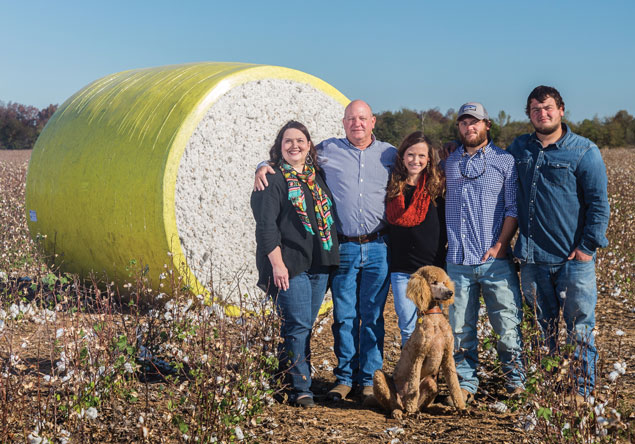
The Yeager family from left to right: Cassandra and Mark, daughter Anna Brakefield and sons Mark Jr. and Joe. Dog Cotton proudly poses in front.
Photo by Gary Clark
Northwestern Alabama cotton farmer Mark Yeager knows all about making lemonade out of lemons. Or rather, making a thriving cotton business out of a challenging cotton market.
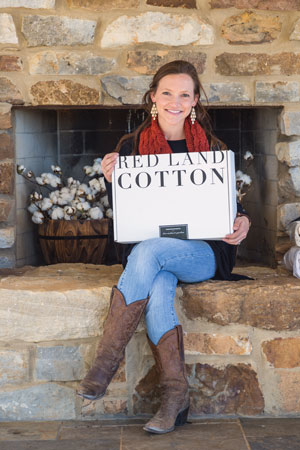
Anna Yeager Brakefield with one of the first sets of sheets produced by Red Land Cotton.
Photo by Gary Clark
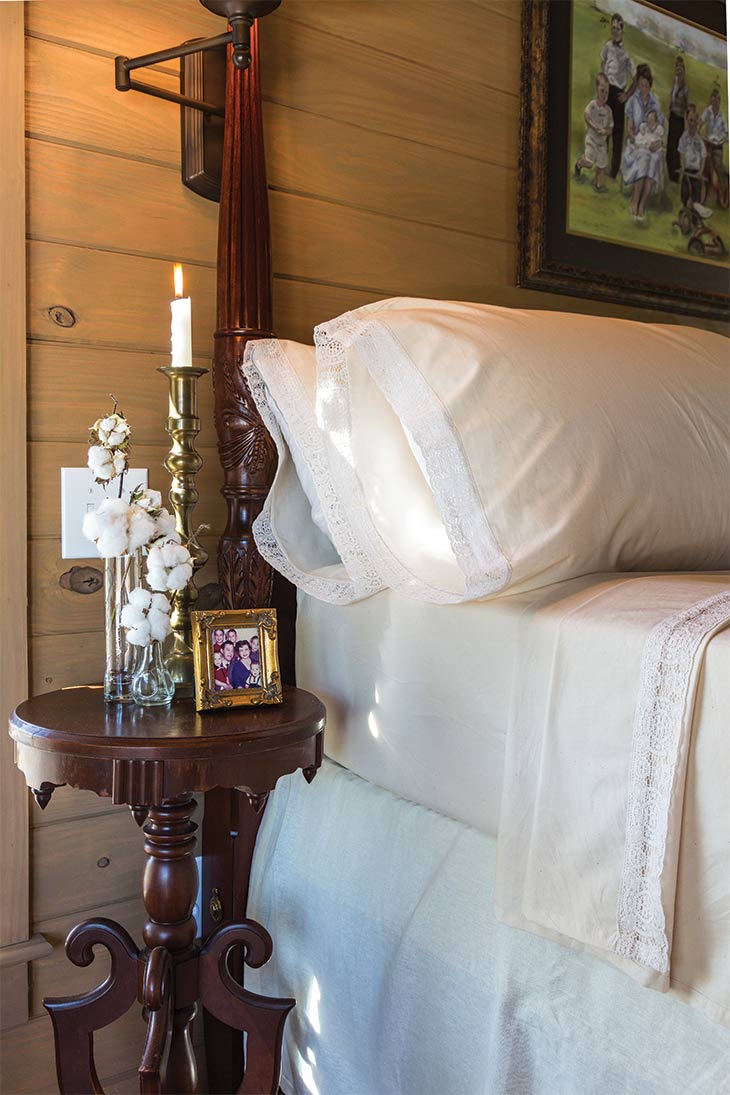
Photo by Gary Clark
He and his family have done just that for three generations on the Yeager farm, which he took over in 1983.
Despite being blessed with the farm’s rich red clay soil, renowned for producing premier cotton at the foot of Bankhead National Forest, he, like other cotton producers, has faced declining prices and escalating operating expenses.
Many of Yeager’s peers have exited the market for greener pastures such as soybeans and corn. According to USDA Census of Agriculture data, the number of cotton farms in Alabama dropped from 1,820 in 1987 to 925 in 2012. Cotton ranks fifth in the value of agricultural products sold in Alabama, behind poultry, other grains and crops, and cattle operations.
Building His Own Gin
What Yeager needed in order to continue pursuing his passion for cotton farming was innovation and an entrepreneurial spirit. And that spirit was evident in 1994, when he took the bold step to build his own cotton gin so he could control the fiber quality of his crops.
“I wanted control of my own cotton and to mill my own cotton seed,” says Yeager. “We have one key employee who works on the farm in the off-season and is very capable of running the gin in the fall, average ginning 5,000 to 6,000 bales a year in about a five-week period.”
While the gin ensured quality control and provided an income stream, the family continued to look for business strategies to maximize their farm income. Last year, a simple post on Instagram pointed them to their most recent venture, which launched this fall — Red Land Cotton heirloom sheets crafted from their own crop.
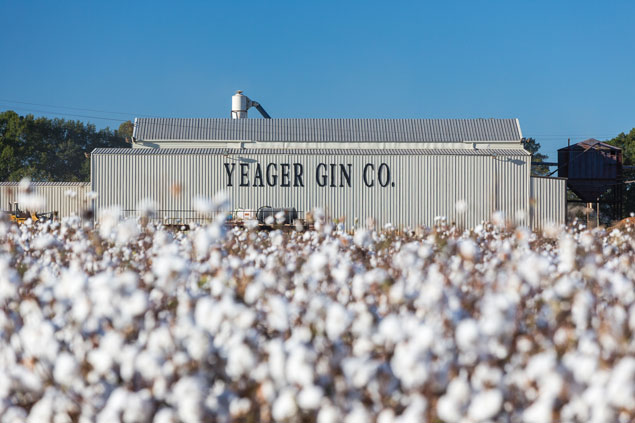
The Yeager family operates their own gin so that they can control their fiber quality.
Photo by Gary Clark
“Last year, Dad posted a video to Instagram while they were ginning their cotton, and his sister, who lives in Dallas, commented that she would love some sheets from that North Alabama cotton,” says Yeager’s daughter Anna Brakefield. “Ever since then, Dad kept thinking on it, and asked me if I’d like to get involved.”
The timing and opportunity couldn’t have been better for the young marketing professional. Brakefield recently had moved back near the family farm after two years with a New York City advertising agency.
Defining the Brand
With the idea of developing their own line of cotton bedding, she and her dad set about doing market research, talking with friends and neighbors to refine their concept. The late Madeline Gray, the great-grandmother of a friend, provided the light-bulb moment.
“My goal is that every ounce of cotton that leaves the farm goes into our own textile.”
– Mark Yeager
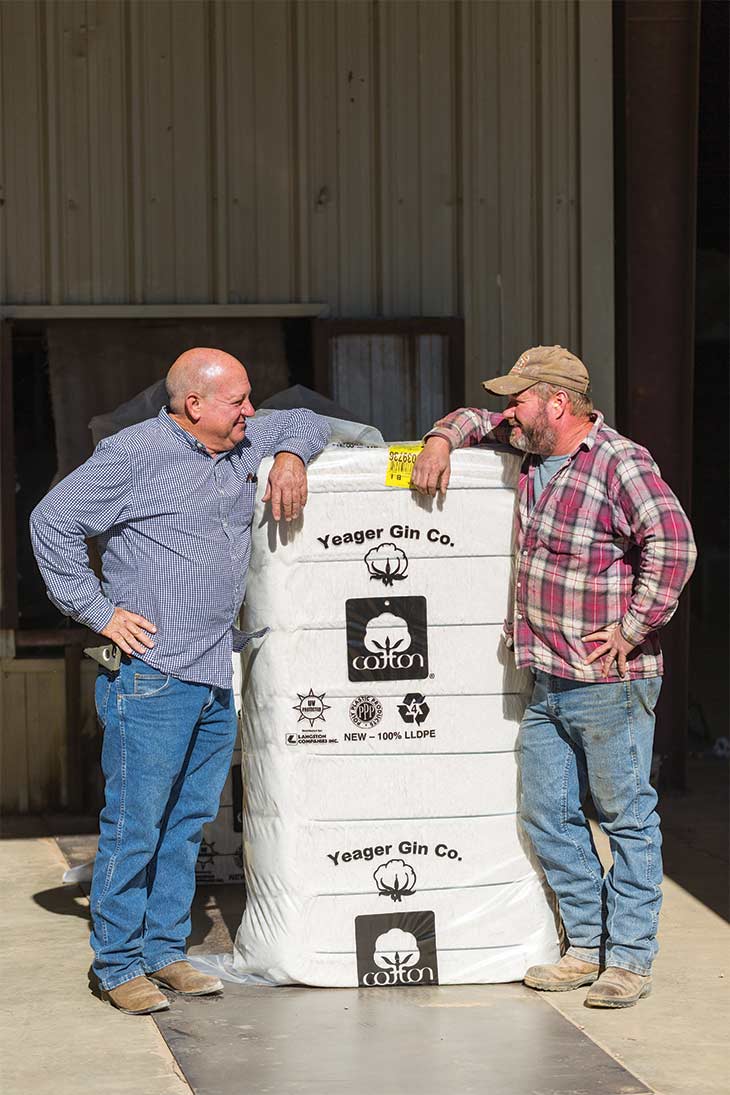
Photo by Gary Clark
Mark Yeager and his farm and gin manager, Tony Blankenship.
“We wanted to do something different, and had been asking around, getting ideas from people. A friend came up to me in Sunday school and mentioned that she had found some 1920s linens in a chest that had been passed down to her from her great-grandmother, Madeline Gray,” says Yeager. “I slept on them and they reminded me of sleeping on grandma’s sheets as a kid.”
The idea of vertically integrating appealed to Yeager. Father and daughter considered producing a sheet to compete in the exclusive Pima sheet market, but the romance and nostalgia of days gone by resonated with them.
“We could have made a high-thread-count, high-sheen sheet with the high-quality cotton we are growing, but I don’t think that would have correlated with who we are here on the farm,” says Brakefield, who researched pricing and messaging to differentiate Red Land Cotton sheets from other high-end sheets. “We wanted to make something that was different.”
Recreating Grandma’s Sheets
What was missing, they determined, was a superior-quality sheet made to the specifications of heirloom textiles. With that concept in mind, they sent Madeline Gray’s sheet to Cotton Incorporated’s textile engineers to be analyzed, and replicated it as closely as possible. In fact, Gray is the namesake for one of two lines that entered production this fall. They mimic Gray’s originals down to the double-hemstitching, lace edging, and bleached and natural color options.
“We are using the best cotton we have, and the construction will feel very much like a 1920s sheet. It breathes much better than a tightly woven 600-count sheet,” Brakefield says, describing Red Land’s sets of heirloom sheets, which retail online starting at $250.
Yeager set aside 50 bales from the 2015 harvest — approximately 1 percent of his total production — to test the market.

Photos courtesy of Red Land Cotton
Spools of yarn and rolls of sheeting fabric made from the Yeagers’ cotton.
“To find a mill willing to make yarn out of our 50 bales of cotton was an interesting process,” says Yeager, who ultimately secured Parkdale Mills in North Carolina to spin the yarn. “It is really amazing to me, given the total number of bales they will do, that they accepted our proposal.”
The yarn is shipped to Hamrick Mill in Gaffney, S.C., for weaving — one of only two mills in the United States that can weave cloth the width of a bed sheet.
“I have a much greater appreciation now for what is required to take a bale of cotton all the way to a finished textile,” he says.
Marketing Through Social Media
To generate advance sales, Brakefield placed drawings of the sheet designs online and promoted them on social media.
“Online marketing offers so many options and capabilities for a person in rural Alabama to reach the masses,” says Brakefield, who has relied heavily on social platforms and low-cost videos posted on the Red Land Cotton website to evoke a nostalgic tone.
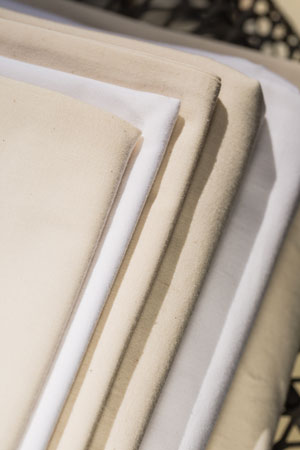
Photo by Gary Clark
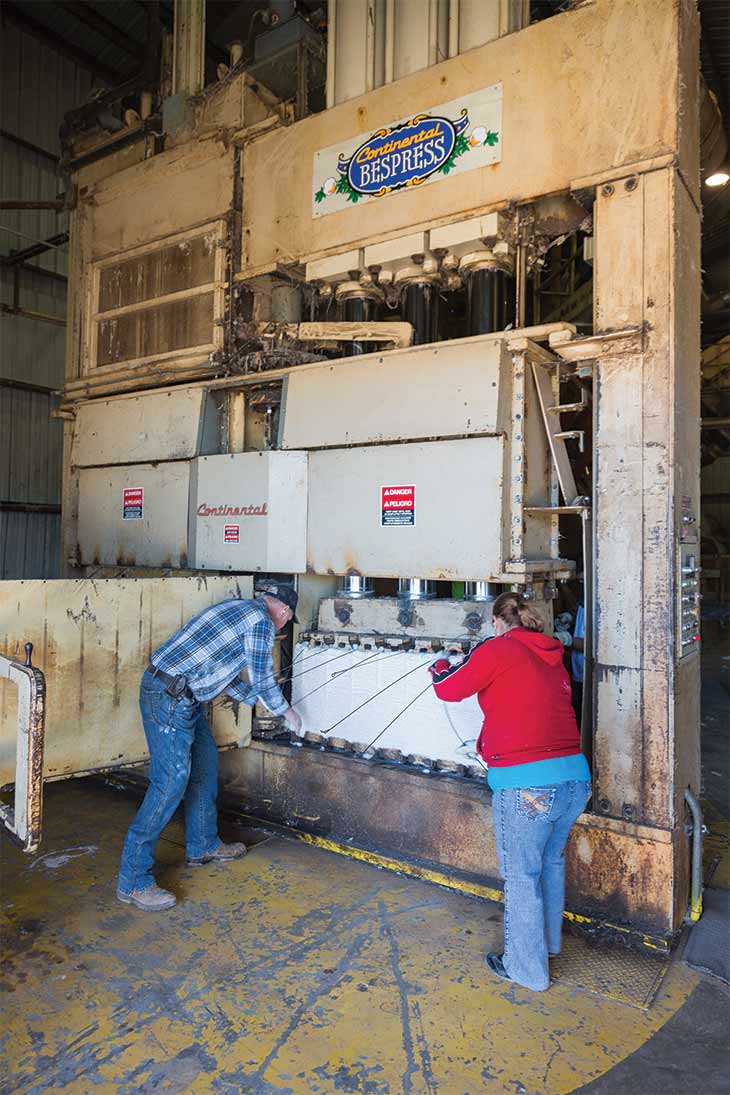
Photo by Gary Clark
Wire is tied around cotton bales on the gin press.
“It doesn’t cost anything to go out into the field and take a video and share what you are doing,” she says. “A lot of people don’t know what goes into producing a cotton crop, and we want to be able to share that.”
She adds, “There’s always been something very warm and romantic in the old way. I think that, even though you may not necessarily want to live like the old days, that old way is reminiscent of a sweeter time. It is a different kind of romantic.”
The initial marketing alone generated sales of roughly 100 sets, which began shipping in mid-October. Red Land Cotton expects to produce approximately 3,500 sheet sets in its initial production run, and is planning a seven-fold expansion for next year.
“My goal is that every ounce of cotton that leaves the farm goes into our own textile,” Yeager says.
If the past is any predictor, those who know Yeager won’t be surprised when he achieves that goal.
“Mark has been a Farm Credit customer for more than 30 years and is a top-notch row-crop farmer and excellent businessman,” says the Yeagers’ loan officer, Heath Davis, vice president and branch manager with Alabama Farm Credit in Tuscumbia. “While other cotton farmers are diversifying into other crops, Mark is taking his cotton and further producing it. What he is doing is completely unique from anything I have seen.”